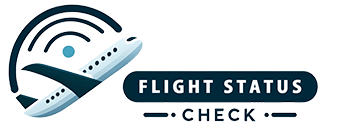In the world of aviation, flight status has always been a crucial aspect for both passengers and airlines. Airlines constantly strive to provide the most up-to-date information to their customers, as delays and cancellations can heavily impact travel plans. The history of flight status tracking dates back to the early 20th century, but it wasn’t until the 1950s that a more formal and organized approach to tracking flight status was established. This article will explore the significance of flight status in 1952, including how it was tracked and communicated, and the impact it had on the aviation industry at the time.
In 1952, the aviation industry was experiencing rapid growth and technological advancements. Commercial air travel had become more accessible to the general public, and airlines were operating an increasing number of flights. As a result, the need for accurate and reliable flight status information became more important than ever.
One of the primary methods used to track flight status in 1952 was through radio communication. Pilots would regularly transmit their position, altitude, and other relevant information to air traffic control (ATC) centres, where this data would be recorded and used to monitor the progress of each flight. This allowed ATC to keep track of the location and status of every aircraft within their jurisdiction, enabling them to provide timely updates to airlines and passengers.
In addition to radio communication, airlines and ATC also relied on the use of radar systems to track the movement of aircraft. Radar technology had been developed during World War II and was quickly adapted for civilian use in the post-war years. This development significantly enhanced the ability to track and monitor the status of flights, as it provided real-time information on the position and movement of aircraft, allowing for more accurate and efficient flight tracking.
One of the major challenges of tracking flight status in 1952 was the lack of a centralized and standardized system for disseminating this information to the public. Unlike today, where passengers can easily check the status of their flight online or through mobile apps, in 1952, the process was much more cumbersome. Passengers often relied on airline staff and airport personnel to provide them with updates on their flight status, and the information available was often limited and not always accurate.
The introduction of the teletype machine in the 1950s revolutionized the way flight status information was communicated. This new technology allowed airlines and ATC centres to transmit messages in real-time, providing more timely and reliable updates on flight status. Passengers could now receive information about their flight directly from the airport or airline, reducing the need to rely on potentially outdated or inaccurate information from other sources.
The 1950s also saw the rise of the global air traffic control network, with the establishment of the International Civil Aviation Organization (ICAO) in 1944. This international body worked to standardize aviation practices and procedures, including the tracking and communication of flight status. The ICAO introduced the use of standard radio frequencies and communication protocols, making it easier for airlines and ATC to exchange flight status information across different regions and countries.
The 1952 flight status was also impacted by factors such as weather conditions and aircraft performance. Weather forecasts and reports played a crucial role in tracking flight status, as adverse weather could lead to delays and cancellations. Airlines and ATC had to closely monitor weather patterns and make decisions based on the safety and efficiency of each flight. Aircraft performance was another important factor, as mechanical issues or malfunctions could affect the status of a flight. Airlines had to ensure that their aircraft were well-maintained and equipped to handle the demands of commercial air travel.
Overall, the tracking and communication of flight status in 1952 were essential for the safe and efficient operation of the rapidly growing aviation industry. While the methods and technologies used at the time may seem archaic by today’s standards, they represented a significant step forward in the development of modern flight tracking systems. The advancements made during this period laid the groundwork for the sophisticated flight status tracking systems that we rely on today, ensuring that passengers have access to accurate and reliable information about their flights.

Leave a Reply